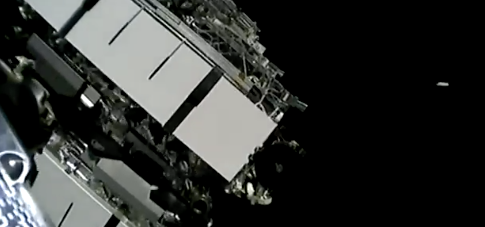Latest News

Starlink satellites deploy in space in the early hours of March 11, 2021. Screenshot via SpaceX
SpaceX launched another batch of 60 Starlink satellites early on Thursday morning as it increases the service area of its Low-Earth Orbit (LEO) constellation. This week, SpaceX launched in beta testing in Germany and New Zealand, and is expanding beta service in the United Kingdom, SpaceX engineer Jessie Anderson said during Thursday’s launch broadcast.
A Falcon 9 rocket took off from Space Launch Complex 40 at Cape Canaveral Space Force Station in Florida at 3:13 a.m. ET on March 11. After stage separation, the first stage booster landed on a drone ship about 8:30 into the mission. The Starlink satellites were deployed one hour and five minutes after liftoff. This was SpaceX’s 21st Starlink launch overall, and the launcher’s seventh mission of 2021.
Starlink is a satellite constellation to deliver low-latency broadband internet service from space. The “Better Than Nothing Beta” testing kicked off in the U.S. in late October of 2020.
Separately, SpaceX has plans to provide Starlink connectivity on aircrafts, ships, large trucks, and RVs. In a recent FCC filing, SpaceX asked for a blanket license authorizing operation of its terminals as Earth Stations in Motion (ESIMs) on aircrafts, ships, and vehicles.
SpaceX said in the filing that its ESIMS are electrically identical to the authorized consumer user terminals, but have mountings that allow them to be installed on vehicles, vessels and aircraft.
“Operation under the requested blanket license will promote competition in the market for in-motion broadband services, to the benefit of drivers, ship operators, and air travelers in the United States and abroad,” Director of Satellite Policy David Goldman wrote in the filing.
After news reports on the filing, SpaceX Founder Elon Musk clarified that the company doesn’t intend to connect to cars. “Not connecting Tesla cars to Starlink, as our terminal is much too big. This is for aircraft, ships, large trucks & RVs,” Musk tweeted on March 8.
Get the latest Via Satellite news!
Subscribe Now